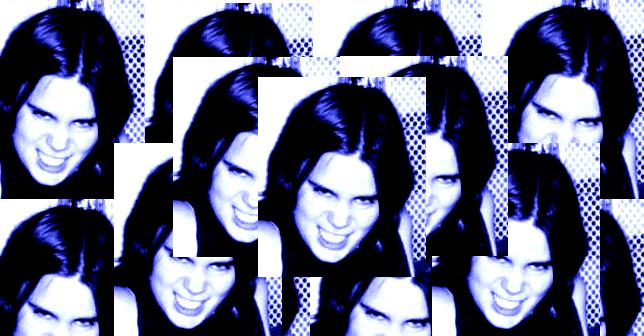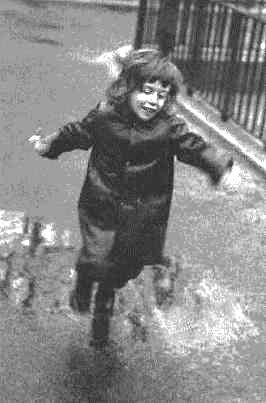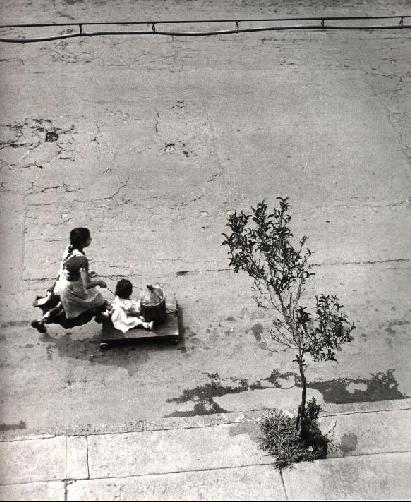Like project two, the
third project is also structured around the notion of interconnectivity;
project three, however, focuses on evoking what Giorgio Agamben calls
"whatever singularities." For this project, I assign smaller
tasks so that students are not overwhelmed. As in project two, I present
the students with a problem:
Problem: In The
Coming Community, Giorgio Agamben discusses the possibility
of a new planetary humanity. His solution is the Whatever, or quodlibet.
Although one could never foretell precisely the coming of events--how
many of us could have predicted the destruction of the World Trade
Center on September 11?--one might say that we as a society could
effect a change. Agamben, along with other hopeful citizens, see
the Whatever as the beginning of hope. Our section of ENG 1131 will
attempt to "test" Agamben's theory. The question we are
trying to answer is, "Does the Whatever provide happiness or
an ineffable experience for us?"
 I
then assign four exercises, which will lend themselves to the final
project. In the first exercise, students are required to write, in
300-600 words, about Roland Barthes' Camera Lucida. They must
explain what Barthes draws from photography and what people might
possibly see or experience in a photograph. Then, students must explain
in about 10 to 12 sentences what Barthes means by punctum,
which refers to an element in a photograph that pricks or wounds a
viewer. Punctum is not something that generally interests someone,
such as a beautiful sunset or, most currently, a collapsing building,
which might invoke a recollection of 9-11, thus a national identity.
In locating punctum, Barthes wishes to locate only what he
himself could see, not what others saw. Punctum was his way
of forging an individuality; it occurs when one least expects it.
It is a small, overlooked detail--here is where "Observing the
Ordinary" returns to the course--in a photograph that evokes
or triggers a memory, that enables the viewer to appropriate the photograph
for herself. The 10 to 12 sentences serve a guide for the photographs
that the students must choose for exercise two.
I
then assign four exercises, which will lend themselves to the final
project. In the first exercise, students are required to write, in
300-600 words, about Roland Barthes' Camera Lucida. They must
explain what Barthes draws from photography and what people might
possibly see or experience in a photograph. Then, students must explain
in about 10 to 12 sentences what Barthes means by punctum,
which refers to an element in a photograph that pricks or wounds a
viewer. Punctum is not something that generally interests someone,
such as a beautiful sunset or, most currently, a collapsing building,
which might invoke a recollection of 9-11, thus a national identity.
In locating punctum, Barthes wishes to locate only what he
himself could see, not what others saw. Punctum was his way
of forging an individuality; it occurs when one least expects it.
It is a small, overlooked detail--here is where "Observing the
Ordinary" returns to the course--in a photograph that evokes
or triggers a memory, that enables the viewer to appropriate the photograph
for herself. The 10 to 12 sentences serve a guide for the photographs
that the students must choose for exercise two.
In exercise two, students
must find three photographs in which they identify punctum. They may
not use photographs with which they are already familiar or any that
they have taken as a photographer. The photos must also be black and
white and have been taken before their birthdates. Then, in about
300 words or less--no less than 50 words each, though--students must
articulate what punctum in each photograph might be for them.
That is, they must identify the detail in a photograph that triggers
a memory, and they must describe the memory. (Notice another theme--memory--that
returns to us later in the semester.)
 For
exercise three, students must generate haikus for the three photographs.
I incorporate haikus largely because Barthes likens the haiku to the
photograph. The haiku also forces students to pay closer attention
to detail and language, again, two themes that we explored earlier
in the semester in "Observing the Ordinary" and semiotics,
respectively.
For
exercise three, students must generate haikus for the three photographs.
I incorporate haikus largely because Barthes likens the haiku to the
photograph. The haiku also forces students to pay closer attention
to detail and language, again, two themes that we explored earlier
in the semester in "Observing the Ordinary" and semiotics,
respectively.
Last, for exercise four,
students must select a film of which they are fond, but do not really
know or have never figured out why. The task then is for the students
to view the film as they would a photograph, to recall specific scenes
as one would locate specific details. Essentially, students want to
describe their relationship with the film in terms of punctum.
For the final project, once
the students have completed the four exercises, they begin to create
a Whatever space by making connections with their assignments. There
are three parts to the evocation of project three. The requirements
for first two parts are as follows: 1) Students must scan or download
two or three images of themselves for the project. How they incorporate
the images is at their discretion; 2) Students must recall the experience
of watching the film that "pricked" or "wounded"
them and chronicle that experience in about seven or eight sentences.
They must then articulate this experience using scenes or images from
the film and should be able to complete the second part in about seven
web pages.
After completing parts one
and two, students must incorporate the three photographs, the punctum
explanations, and the haikus. The result should be to evoke an experience,
a whateverness. In this Whatever space, they make connections not
based on logic but on a feeling, an emotion, however the student sees
fit. So, no connection is ever wrong.
 The
third project is the third approach to one's identity, drawing primarily
from experiences and emotions. If the first project serves as an initial
examination of who the student believes s/he is, and the second project
accounts for how family and society contribute the construction of
the student, the third project attempts to explore one's identity
outside of social and political forces. The third project encourages
the student to look inward, to try escaping those binaries or stereotypes
that they are forced to bear as citizens. The project demands that
the student not identify with a certain group or nationality, but
exist herself or himself. So, if I could reformulate the relationship
between the student and projects, I would suggest that the student
in project one only "thinks" s/he is different, the student
in project two realizes that s/he may be similar to many people after
all, and the student in project three believes that there is a hopeful
possibility that s/he may in fact be an individual, a singularity.
The
third project is the third approach to one's identity, drawing primarily
from experiences and emotions. If the first project serves as an initial
examination of who the student believes s/he is, and the second project
accounts for how family and society contribute the construction of
the student, the third project attempts to explore one's identity
outside of social and political forces. The third project encourages
the student to look inward, to try escaping those binaries or stereotypes
that they are forced to bear as citizens. The project demands that
the student not identify with a certain group or nationality, but
exist herself or himself. So, if I could reformulate the relationship
between the student and projects, I would suggest that the student
in project one only "thinks" s/he is different, the student
in project two realizes that s/he may be similar to many people after
all, and the student in project three believes that there is a hopeful
possibility that s/he may in fact be an individual, a singularity.


